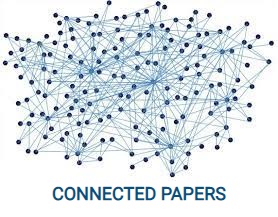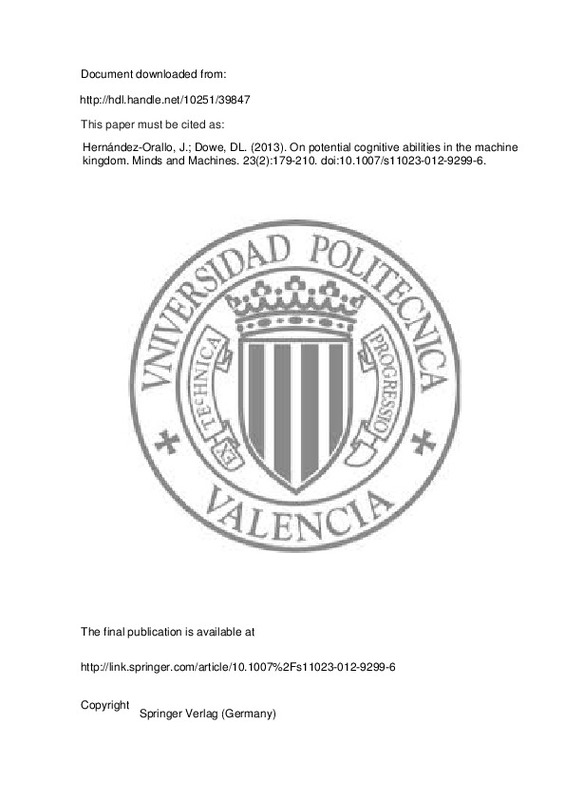Amari, S., Fujita, N., Shinomoto, S. (1992). Four types of learning curves. Neural Computation 4(4), 605–618.
Aristotle (Translation, Introduction, and Commentary by Ross, W.D.) (1924). Aristotle’s Metaphysics. Oxford: Clarendon Press.
Barmpalias, G. & Dowe, D. L. (2012). Universality probability of a prefix-free machine. Philosophical transactions of the Royal Society A [Mathematical, Physical and Engineering Sciences] (Phil Trans A), Theme Issue ‘The foundations of computation, physics and mentality: The Turing legacy’ compiled and edited by Barry Cooper and Samson Abramsky, 370, pp 3488–3511.
[+]
Amari, S., Fujita, N., Shinomoto, S. (1992). Four types of learning curves. Neural Computation 4(4), 605–618.
Aristotle (Translation, Introduction, and Commentary by Ross, W.D.) (1924). Aristotle’s Metaphysics. Oxford: Clarendon Press.
Barmpalias, G. & Dowe, D. L. (2012). Universality probability of a prefix-free machine. Philosophical transactions of the Royal Society A [Mathematical, Physical and Engineering Sciences] (Phil Trans A), Theme Issue ‘The foundations of computation, physics and mentality: The Turing legacy’ compiled and edited by Barry Cooper and Samson Abramsky, 370, pp 3488–3511.
Chaitin, G. J. (1966). On the length of programs for computing finite sequences. Journal of the Association for Computing Machinery, 13, 547–569.
Chaitin, G. J. (1975). A theory of program size formally identical to information theory. Journal of the ACM (JACM), 22(3), 329–340.
Dowe, D. L. (2008, September). Foreword re C. S. Wallace. Computer Journal, 51(5):523–560, Christopher Stewart WALLACE (1933–2004) memorial special issue.
Dowe, D. L. (2011). MML, hybrid Bayesian network graphical models, statistical consistency, invariance and uniqueness. In: P. S. Bandyopadhyay, M. R. Forster (Eds), Handbook of the philosophy of science—Volume 7: Philosophy of statistics (pp. 901–982). Amsterdam: Elsevier.
Dowe, D. L. & Hajek, A. R. (1997a). A computational extension to the turing test. Technical report #97/322, Dept Computer Science, Monash University, Melbourne, Australia, 9 pp, http://www.csse.monash.edu.au/publications/1997/tr-cs97-322-abs.html .
Dowe, D. L. & Hajek, A. R. (1997b, September). A computational extension to the Turing Test. in Proceedings of the 4th conference of the Australasian Cognitive Science Society, University of Newcastle, NSW, Australia, 9 pp.
Dowe, D. L. & Hajek, A. R. (1998, February). A non-behavioural, computational extension to the Turing Test. In: International conference on computational intelligence and multimedia applications (ICCIMA’98), Gippsland, Australia, pp 101–106.
Dowe, D. L., Hernández-Orallo, J. (2012). IQ tests are not for machines, yet. Intelligence, 40(2), 77–81.
Gallistel, C. R., Fairhurst, S., & Balsam, P. (2004). The learning curve: Implications of a quantitative analysis. In Proceedings of the National Academy of Sciences of the United States of America, 101(36), 13124–13131.
Gardner, M. (1970). Mathematical games: The fantastic combinations of John Conway’s new solitaire game “life”. Scientific American, 223(4), 120–123.
Goertzel, B. & Bugaj, S. V. (2009). AGI preschool: A framework for evaluating early-stage human-like AGIs. In Proceedings of the second international conference on artificial general intelligence (AGI-09), pp 31–36.
Hernández-Orallo, J. (2000a). Beyond the Turing Test. Journal of Logic, Language & Information, 9(4), 447–466.
Hernández-Orallo, J. (2000b). On the computational measurement of intelligence factors. In A. Meystel (Ed), Performance metrics for intelligent systems workshop (pp 1–8). Gaithersburg, MD: National Institute of Standards and Technology.
Hernández-Orallo, J. (2010). On evaluating agent performance in a fixed period of time. In M. Hutter et al. (Eds.), Proceedings of 3rd international conference on artificial general intelligence (pp. 25–30). New York: Atlantis Press.
Hernández-Orallo, J., & Dowe, D. L. (2010). Measuring universal intelligence: Towards an anytime intelligence test. Artificial Intelligence, 174(18), 1508–1539.
Hernández-Orallo, J. & Dowe, D. L. (2011, April). Mammals, machines and mind games. Who’s the smartest?. The conversation, http://theconversation.edu.au/mammals-machines-and-mind-games-whos-the-smartest-566 .
Hernández-Orallo J., Dowe D. L., España-Cubillo S., Hernández-Lloreda M. V., & Insa-Cabrera J. (2011). On more realistic environment distributions for defining, evaluating and developing intelligence. In: J. Schmidhuber, K. R. Thórisson, & M. Looks (Eds.), Artificial general intelligence 2011, volume 6830, LNAI series, pp. 82–91. New York: Springer.
Hernández-Orallo, J., Dowe, D. L., & Hernández-Lloreda, M. V. (2012a, March). Measuring cognitive abilities of machines, humans and non-human animals in a unified way: towards universal psychometrics. Technical report 2012/267, Faculty of Information Technology, Clayton School of I.T., Monash University, Australia.
Hernández-Orallo, J., Insa, J., Dowe, D. L., & Hibbard, B. (2012b). Turing tests with Turing machines. In A. Voronkov (Ed.), The Alan Turing centenary conference, Turing-100, Manchester, volume 10 of EPiC Series, pp 140–156.
Hernández-Orallo, J., & Minaya-Collado, N. (1998). A formal definition of intelligence based on an intensional variant of Kolmogorov complexity. In Proceedings of the international symposium of engineering of intelligent systems (EIS’98) (pp 146–163). Switzerland: ICSC Press.
Herrmann, E., Call, J., Hernández-Lloreda, M. V., Hare, B., & Tomasello, M. (2007). Humans have evolved specialized skills of social cognition: The cultural intelligence hypothesis. Science, 317(5843), 1360–1366.
Herrmann, E., Hernández-Lloreda, M. V., Call, J., Hare, B., & Tomasello, M. (2010). The structure of individual differences in the cognitive abilities of children and chimpanzees. Psychological Science, 21(1), 102–110.
Horn, J. L., & Cattell, R. B. (1966). Refinement and test of the theory of fluid and crystallized general intelligences. Journal of educational psychology, 57(5), 253.
Hutter, M. (2005). Universal artificial intelligence: Sequential decisions based on algorithmic probability. New York: Springer.
Insa-Cabrera, J., Dowe, D. L., España, S., Hernández-Lloreda, M. V., & Hernández-Orallo, J. (2011a). Comparing humans and AI agents. In AGI: 4th conference on artificial general intelligence—Lecture Notes in Artificial Intelligence (LNAI), volume 6830, pp 122–132. Springer, New York.
Insa-Cabrera, J., Dowe, D. L., & Hernández-Orallo, J. (2011b). Evaluating a reinforcement learning algorithm with a general intelligence test. In CAEPIA—Lecture Notes in Artificial Intelligence (LNAI), volume 7023, pages 1–11. Springer, New York.
Kearns, M. & Singh, S. (2002). Near-optimal reinforcement learning in polynomial time. Machine Learning, 49(2), 209–232.
Kolmogorov, A. N. (1965). Three approaches to the quantitative definition of information. Problems of Information Transmission, 1, 4–7.
Legg, S. (2008, June). Machine super intelligence. Department of Informatics, University of Lugano.
Legg, S. & Hutter, M. (2007). Universal intelligence: A definition of machine intelligence. Minds and Machines, 17(4), 391–444.
Legg, S., & Veness, J. (2012). An approximation of the universal intelligence measure. In Proceedings of Solomonoff 85th memorial conference. New York: Springer.
Levin, L. A. (1973). Universal sequential search problems. Problems of Information Transmission, 9(3), 265–266.
Li, M., Vitányi, P. (2008). An introduction to Kolmogorov complexity and its applications (3rd ed). New York: Springer.
Little, V. L., & Bailey, K. G. (1972). Potential intelligence or intelligence test potential? A question of empirical validity. Journal of Consulting and Clinical Psychology, 39(1), 168.
Mahoney, M. V. (1999). Text compression as a test for artificial intelligence. In Proceedings of the national conference on artificial intelligence, AAAI (pp. 486–502). New Jersey: Wiley.
Mahrer, A. R. (1958). Potential intelligence: A learning theory approach to description and clinical implication. The Journal of General Psychology, 59(1), 59–71.
Oppy, G., & Dowe, D. L. (2011). The Turing Test. In E. N. Zalta (Ed.), Stanford encyclopedia of philosophy. Stanford University. http://plato.stanford.edu/entries/turing-test/ .
Orseau, L. & Ring, M. (2011). Self-modification and mortality in artificial agents. In AGI: 4th conference on artificial general intelligence—Lecture Notes in Artificial Intelligence (LNAI), volume 6830, pages 1–10. Springer, New York.
Ring, M. & Orseau, L. (2011). Delusion, survival, and intelligent agents. In AGI: 4th conference on artificial general intelligence—Lecture Notes in Artificial Intelligence (LNAI), volume 6830, pp. 11–20. Springer, New York.
Schaeffer, J., Burch, N., Bjornsson, Y., Kishimoto, A., Muller, M., Lake, R., et al. (2007). Checkers is solved. Science, 317(5844), 1518.
Solomonoff, R. J. (1962). Training sequences for mechanized induction. In M. Yovits, G. Jacobi, & G. Goldsteins (Eds.), Self-Organizing Systems, 7, 425–434.
Solomonoff, R. J. (1964). A formal theory of inductive inference. Information and Control, 7(1–22), 224–254.
Solomonoff, R. J. (1967). Inductive inference research: Status, Spring 1967. RTB 154, Rockford Research, Inc., 140 1/2 Mt. Auburn St., Cambridge, Mass. 02138, July 1967.
Solomonoff, R. J. (1978). Complexity-based induction systems: comparisons and convergence theorems. IEEE Transactions on Information Theory, 24(4), 422–432.
Solomonoff, R. J. (1984). Perfect training sequences and the costs of corruption—A progress report on induction inference research. Oxbridge research.
Solomonoff, R. J. (1985). The time scale of artificial intelligence: Reflections on social effects. Human Systems Management, 5, 149–153.
Sutton, R. S., & Barto, A. G. (1998). Reinforcement learning: An introduction. Cambridge: The MIT press.
Thorp, T. R., & Mahrer, A. R. (1959). Predicting potential intelligence. Journal of Clinical Psychology, 15(3), 286–288.
Turing, A. M. (1950). Computing machinery and intelligence. Mind, 59, 433–460.
Veness, J., Ng, K. S., Hutter, M., & Silver, D. (2011). A Monte Carlo AIXI approximation. Journal of Artificial Intelligence Research, JAIR, 40, 95–142.
Wallace, C. S. (2005). Statistical and inductive inference by minimum message length. New York: Springer.
Wallace, C. S., & Boulton, D. M. (1968). An information measure for classification. Computer Journal, 11, 185–194.
Wallace, C. S., & Dowe, D. L. (1999a). Minimum message length and Kolmogorov complexity. Computer Journal 42(4), 270–283.
Wallace, C. S., & Dowe, D. L. (1999b). Refinements of MDL and MML coding. Computer Journal, 42(4), 330–337.
Woergoetter, F., & Porr, B. (2008). Reinforcement learning. Scholarpedia, 3(3), 1448.
Zvonkin, A. K., & Levin, L. A. (1970). The complexity of finite objects and the development of the concepts of information and randomness by means of the theory of algorithms. Russian Mathematical Surveys, 25, 83–124.
[-]







![[Cerrado]](/themes/UPV/images/candado.png)

